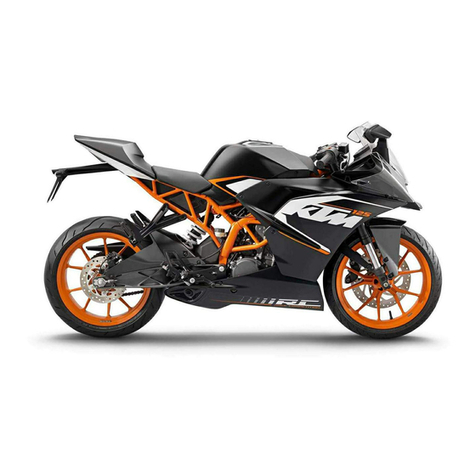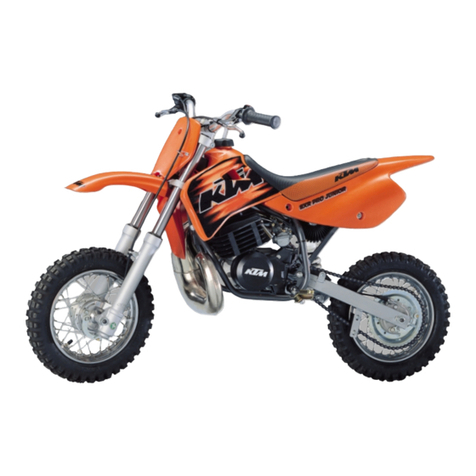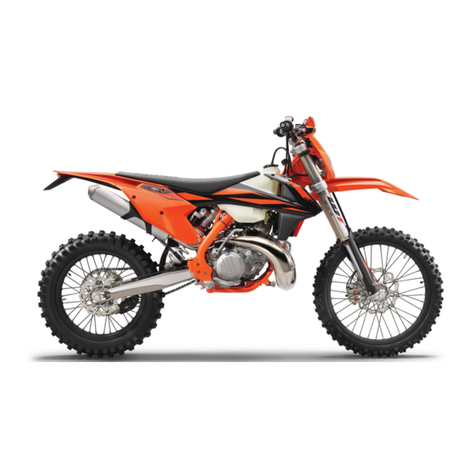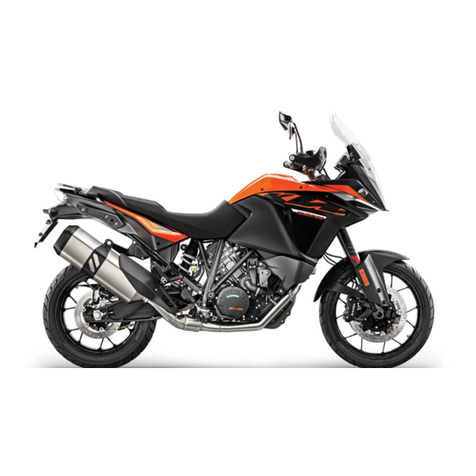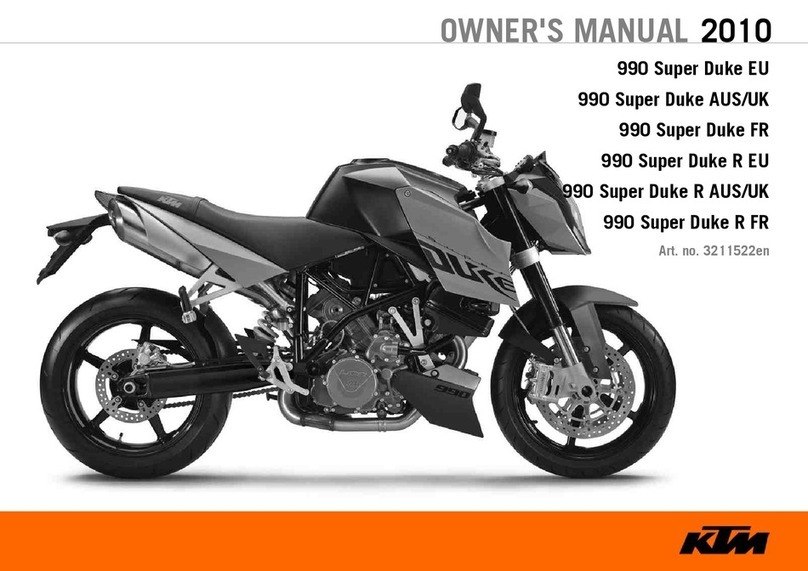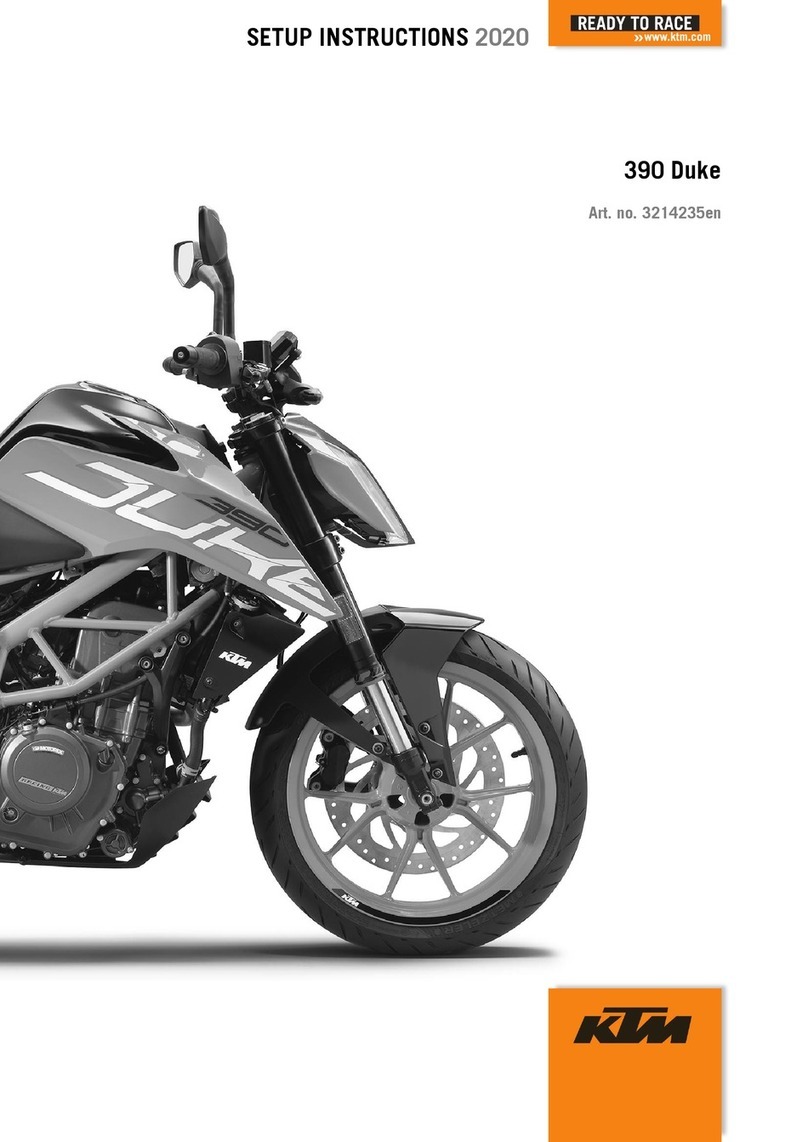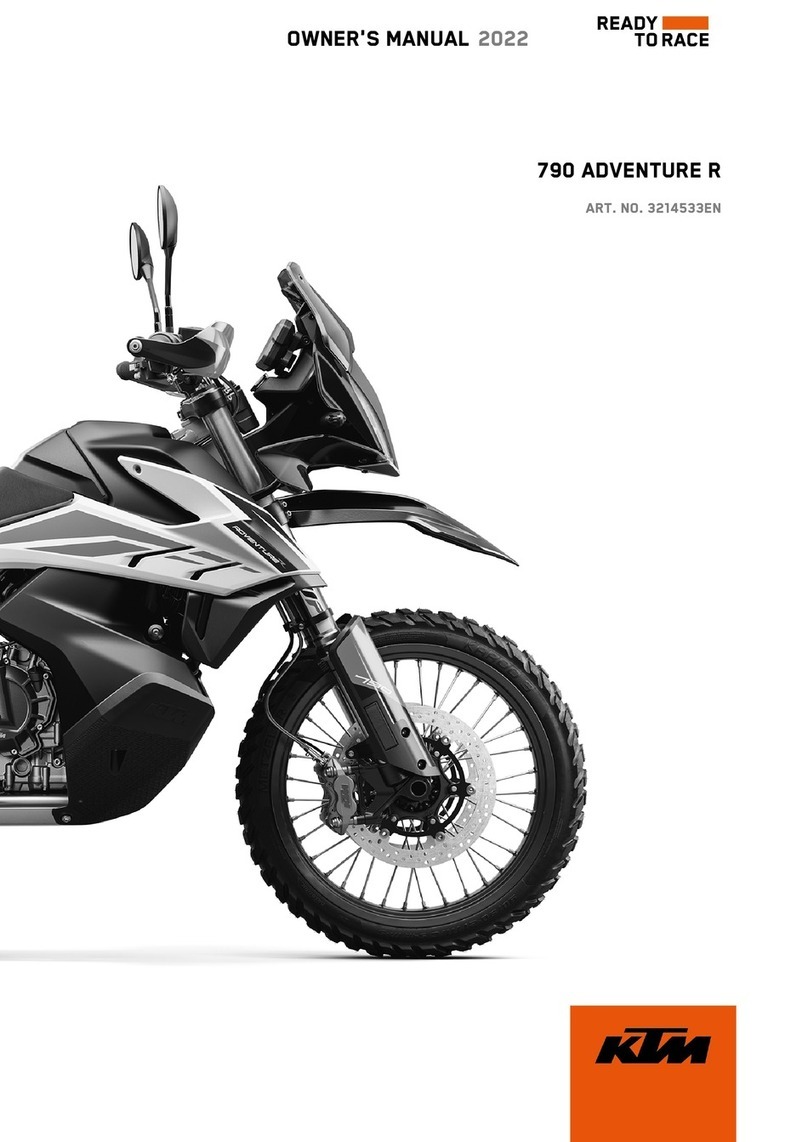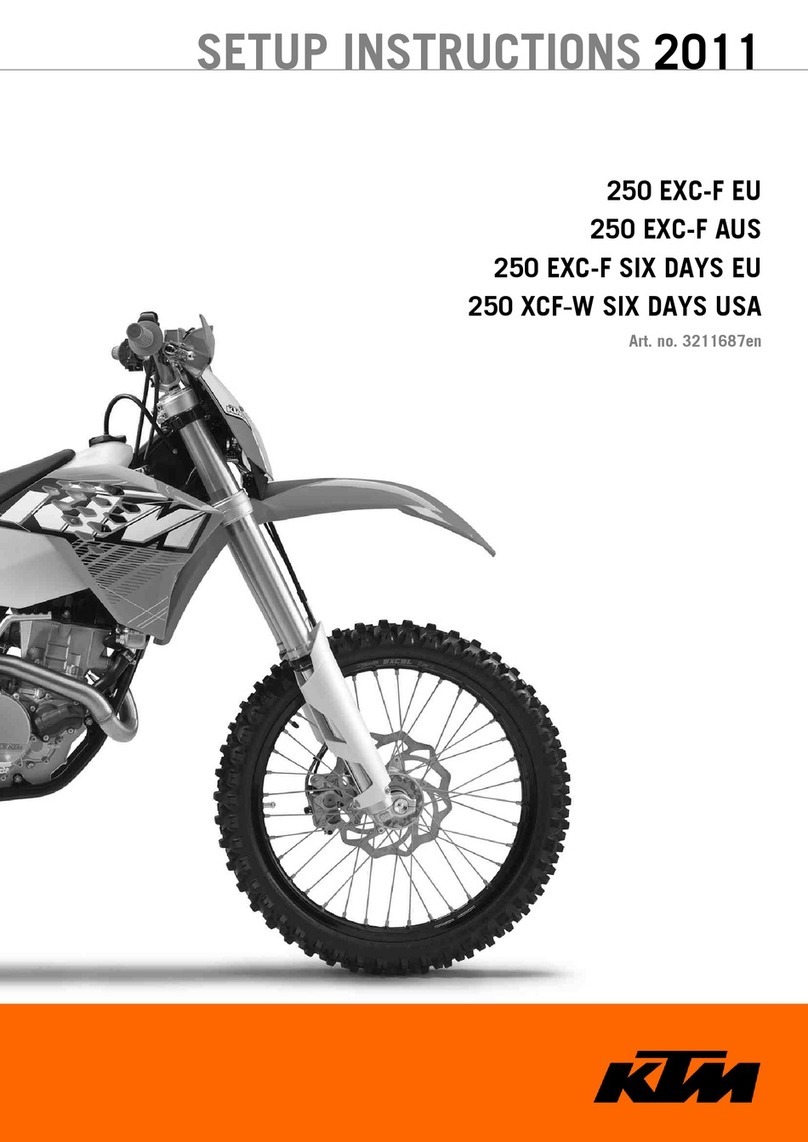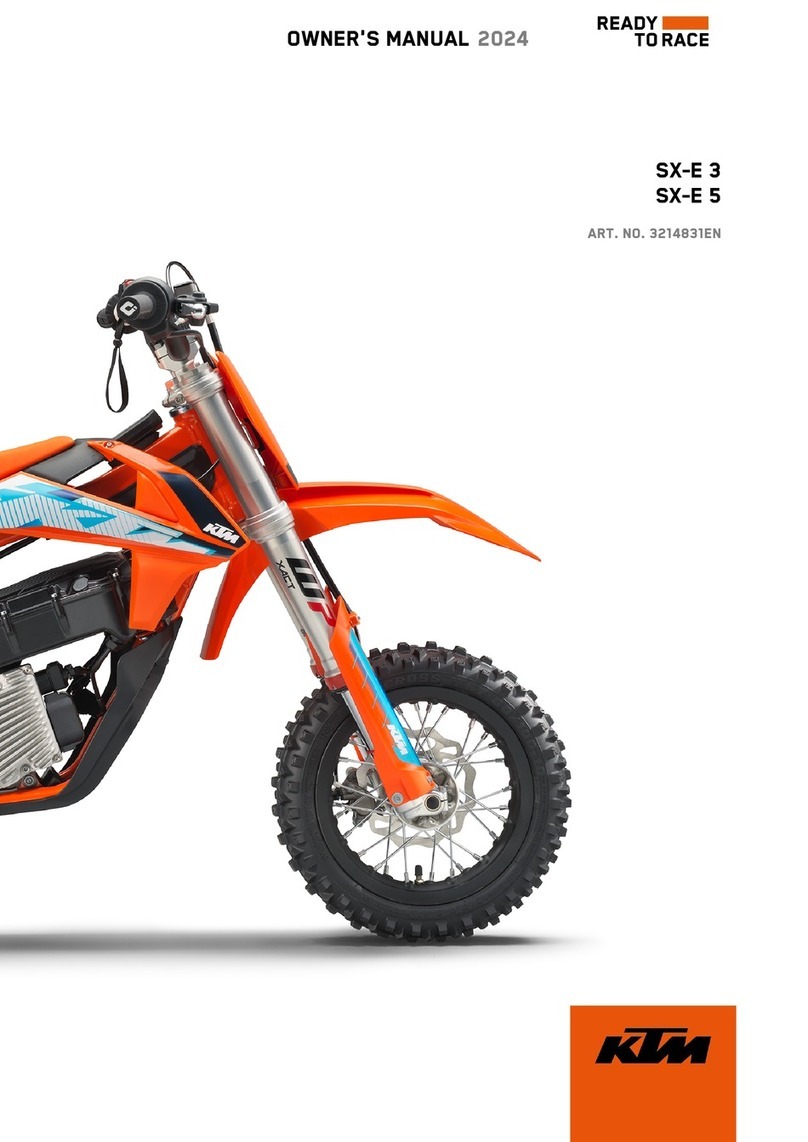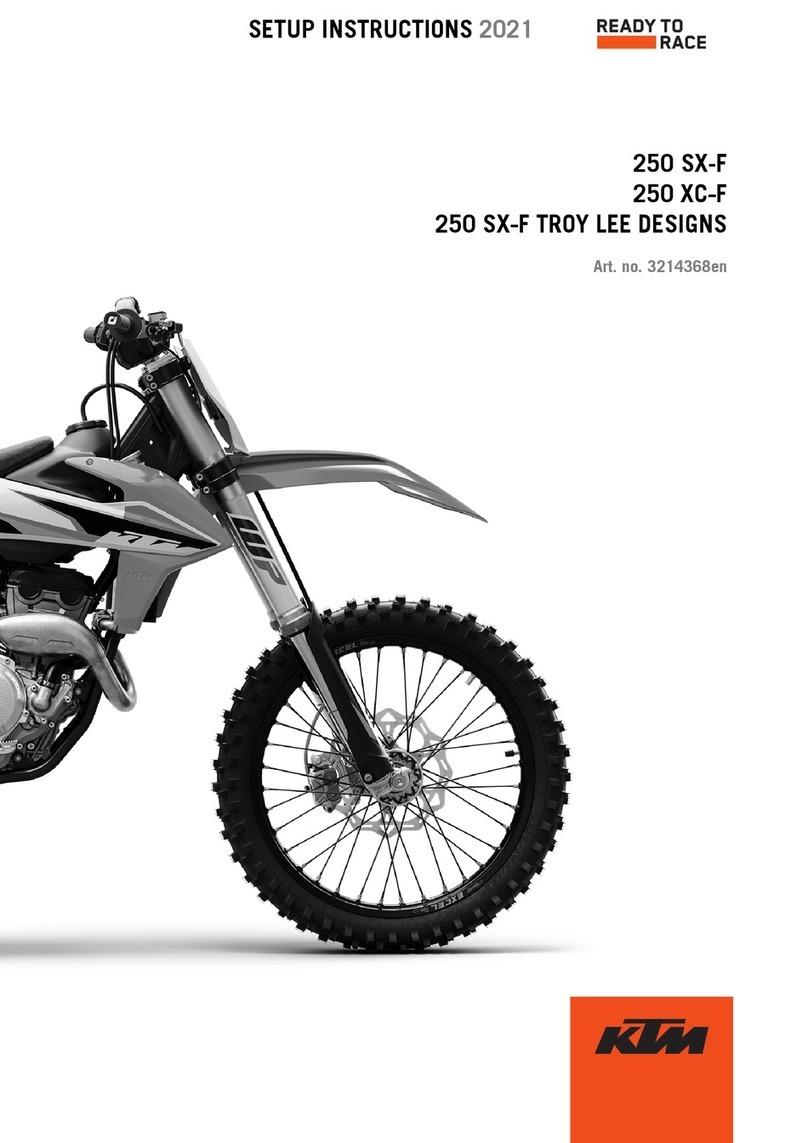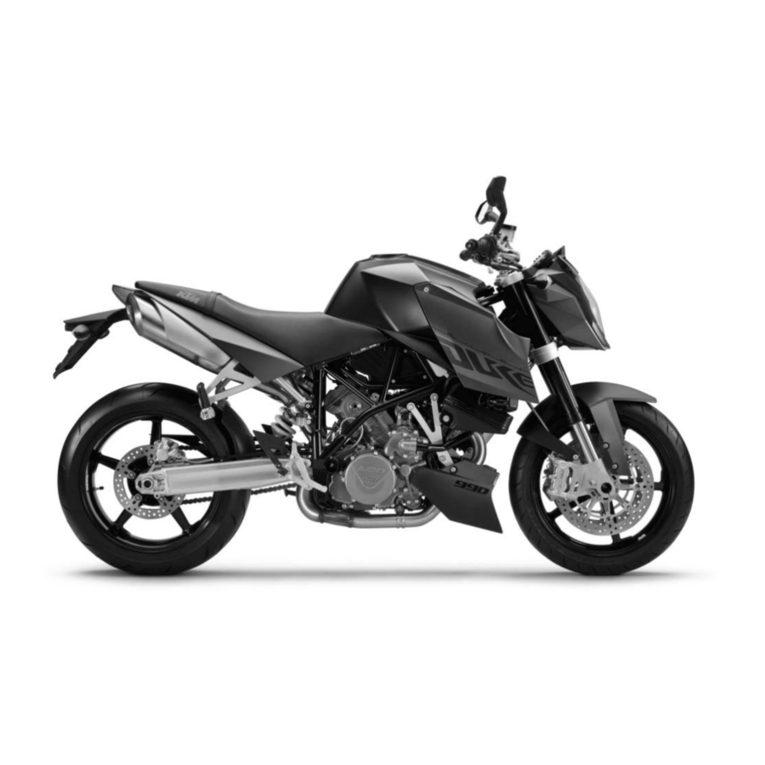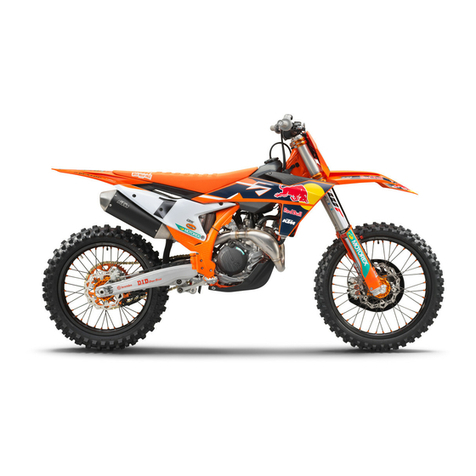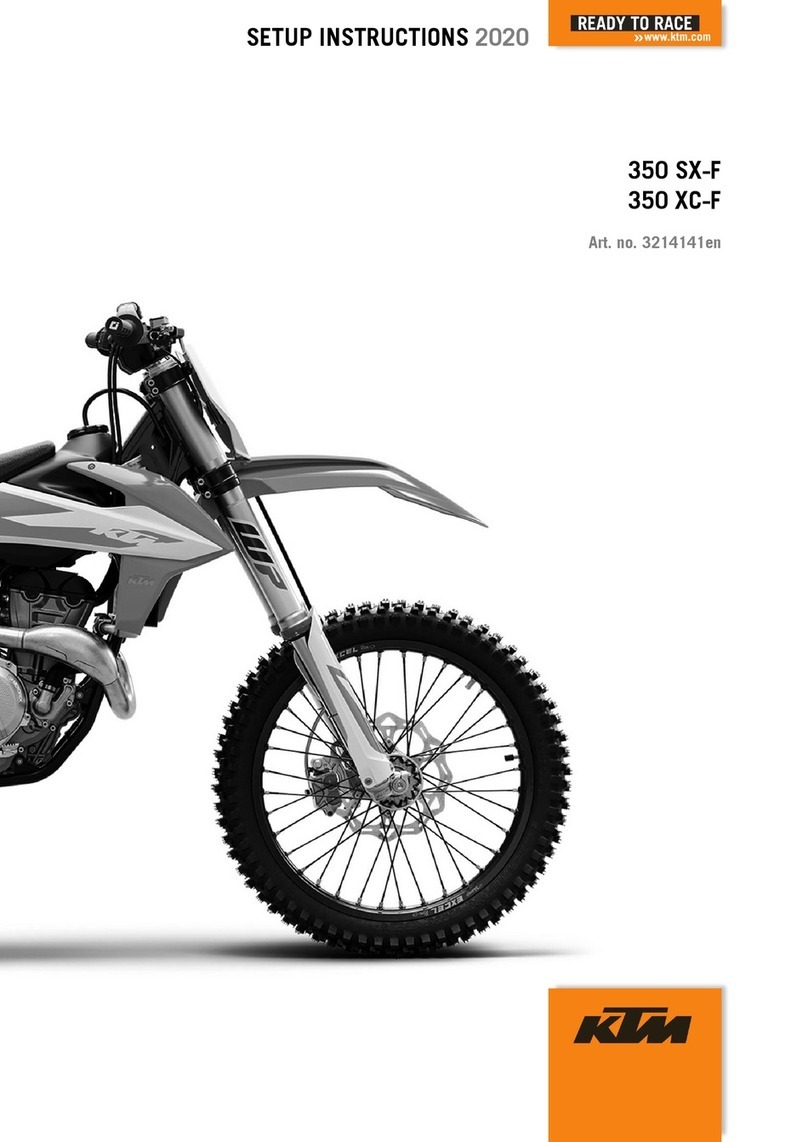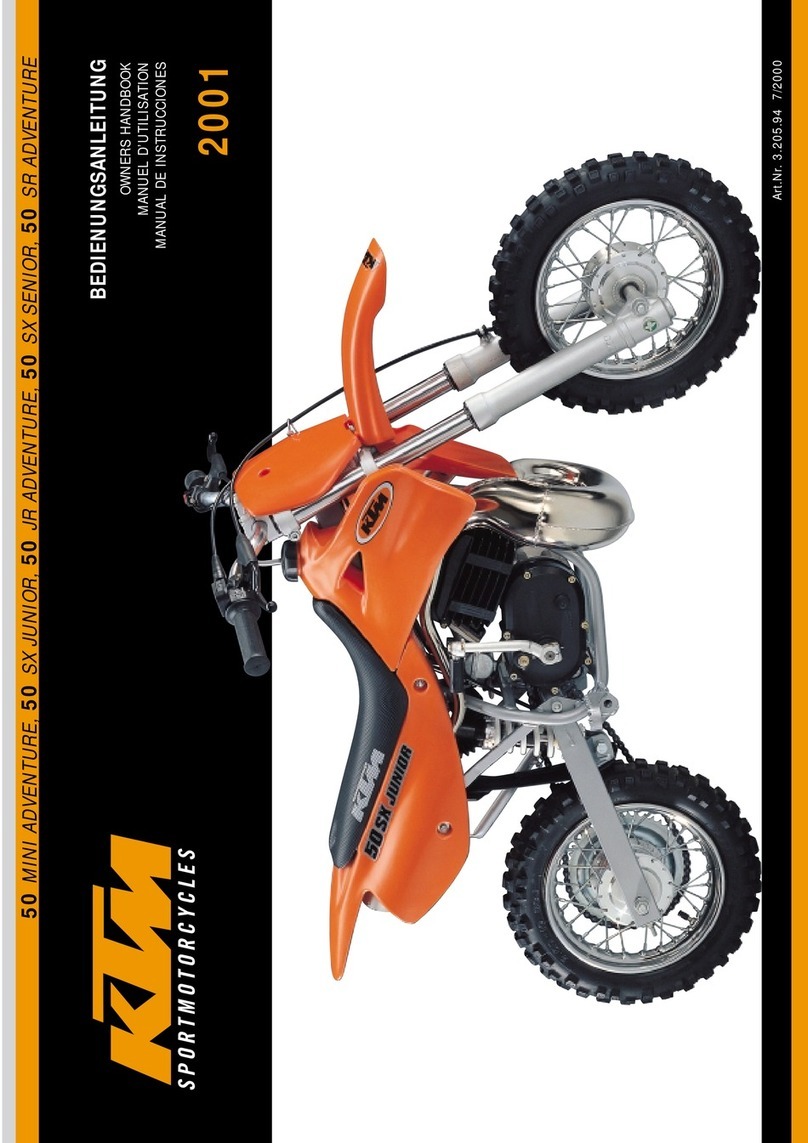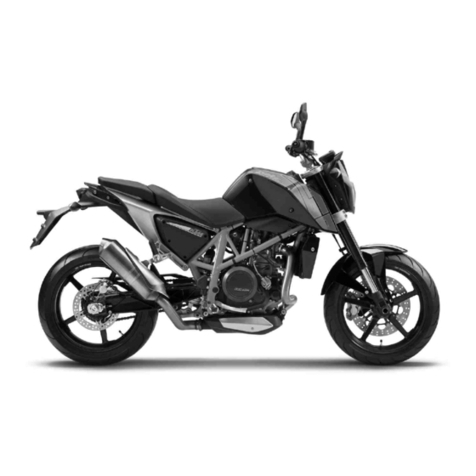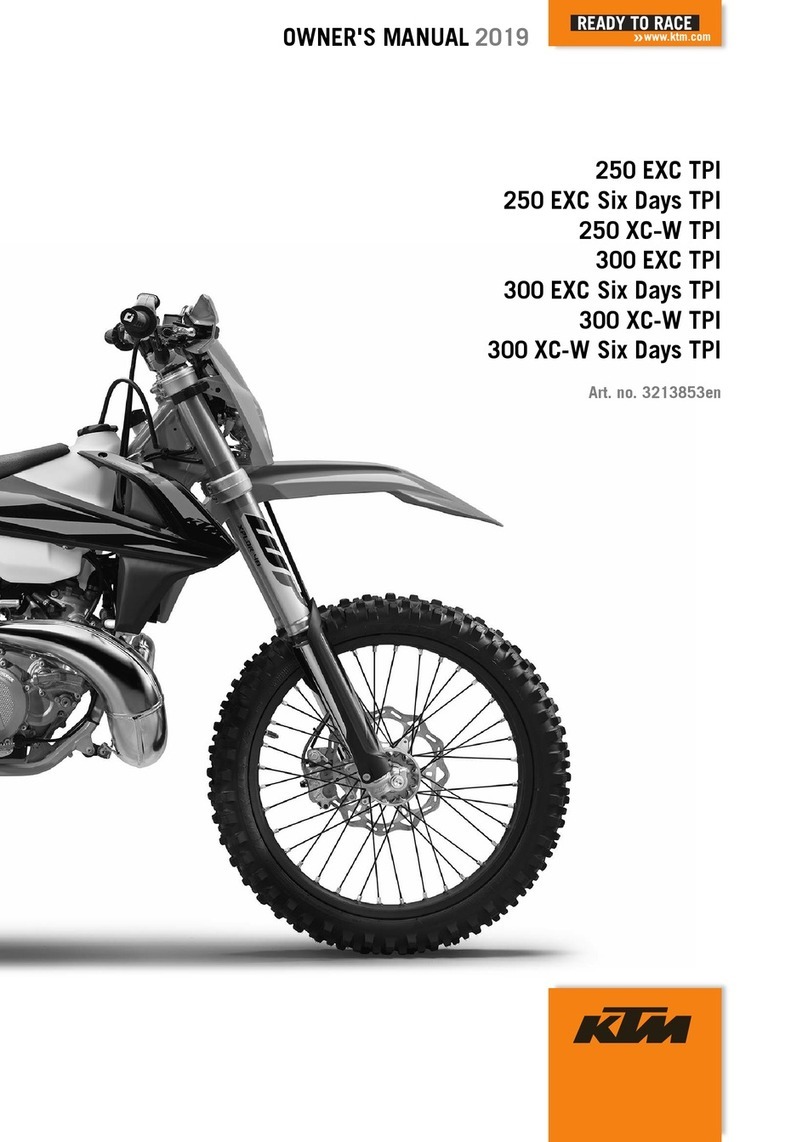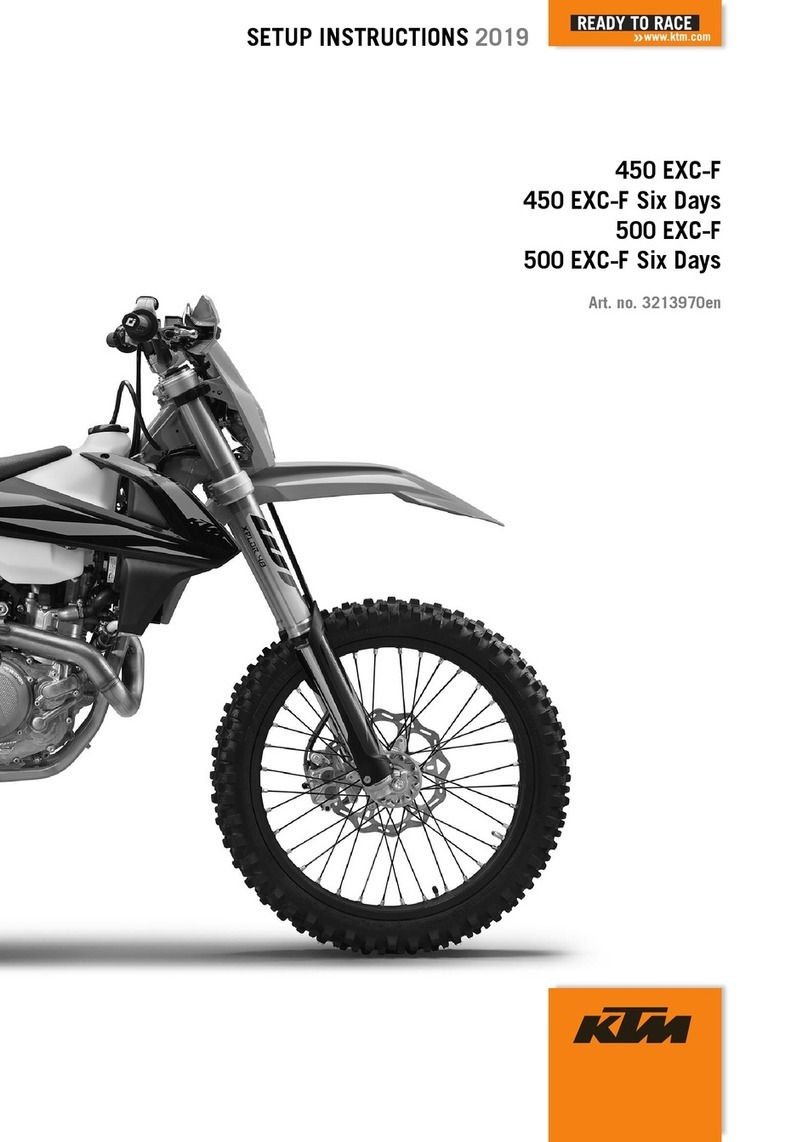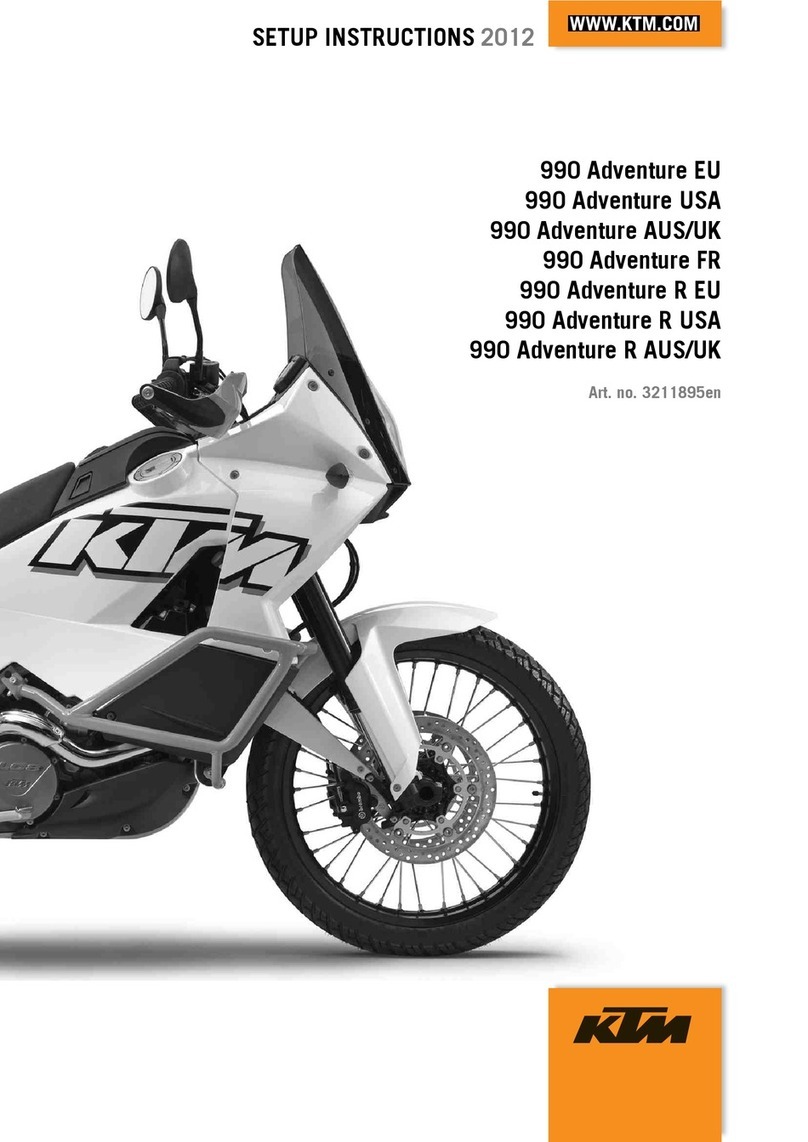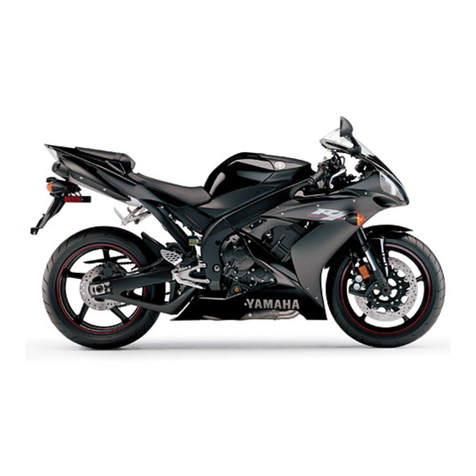ENGLISH
3
Page
SERIAL NUMBER LOCATIONS .............................................4
Chassis number ................................................................4
Engine number, engine type.............................................4
OPERATION INSTRUMENTS ...............................................4
Clutch lever ......................................................................4
Hand decompression lever................................................4
Choke lever......................................................................5
Hand brake lever..............................................................5
Speedometer, indicator lamps...........................................5
Ignition lock .....................................................................5
Combination switch..........................................................6
Starter tip switch, emergency OFF switch .........................6
Filler cap...........................................................................6
Fuel..................................................................................6
Fuel tap............................................................................7
Shift lever .........................................................................7
Kickstarter ........................................................................7
Foot brake pedal ..............................................................7
Compression damping of fork ..........................................8
Rebound damping of fork ................................................8
Compression damping of shock absorber .........................8
Rebound damping of shock absorber ...............................8
Baggage carrier ................................................................8
DRIVING INSTRUCTIONS ....................................................9
PERIODIC MAINTENANCE-SCHEDULE ..............................13
MAINTENANCE WORK ON CHASSIS AND ENGINE ..........14
Tool set ..........................................................................14
Removing the seat..........................................................14
Checking and adjusting steering head bearing................15
Changing the spring preload of the shock absorber........15
Lubricate shock absorber linkage ....................................15
Checking rubber ring on the rear shock absorber............16
Checking chain tension...................................................16
Correct chain tension......................................................16
Chain maintenance.........................................................16
Chain wear.....................................................................17
General information on KTM disc brakes ........................17
Adjisting of free travel at the hand brake lever ...............17
Checking of brake fluid level - front brake......................18
Refilling the front brake fluid reservoir............................18
Checking the front brake pads........................................18
Changing the basic position of the foot brake pedal .......18
Check the rear brake fluid level ......................................19
Refilling the rear brake fluid reservoir .............................19
Checking the rear brake pads .........................................19
Dismounting and mounting the front wheel...................20
Dismounting and mounting the rear wheel.....................20
Checking the shock absorbtion rubbers in the rear hub
.......21
Tires, air pressure............................................................21
Checking spoke tension..................................................21
Battery ...........................................................................22
Charging the battery ......................................................22
Main fuse.......................................................................23
Fuses for individual power-consuming units ...................23
Replacing the headlight bulb ..........................................23
Replacing the parking light bulb .....................................23
Replacing the brake light and tail light bulb ....................24
Cooling system...............................................................24
Checking the cooling liquid level ....................................25
Adjusting idling speed ....................................................25
Adjusting the throttle cable ............................................25
Adjusting the choke cable...............................................26
Adjusting the clutch cable...............................................26
Checking the adjustment of the hand decompression cable .....
26
Engine oil .......................................................................26
Checking the engine oil level..........................................26
Oil circuit........................................................................27
Oil change and bleeding of the oil system ......................27
Changing the fine screen filter........................................28
Changing oil filter ..........................................................28
TROUBLE SHOOTING........................................................29
CLEANING..........................................................................32
CONSERVATION FOR WINTER OPERATION ....................32
STORAGE ...........................................................................32
Re-initation after time of storage....................................32
TECHNICAL SPECIFICATIONS - CHASSIS...........................33
TECHNICAL SPECIFICATIONS - ENGINE ..........................34
WIRING DIAGRAM................................................APPENDIX
Index

